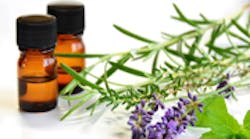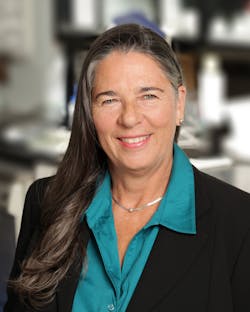The therapeutic use of essential oils in ancient and modern times
What is a medicinal or “therapeutic grade” essential oil and how is it different from what I find at the shopping mall? This article will explore the differences, as well as the therapeutic use of oils through the centuries.
Classification of oil quality
Most oils sold in the United States are perfume or food grade and not suitable for therapeutic purposes (see editor's note). Furthermore, many brands purporting to be therapeutic grade are improperly distilled (and thus lack key constituents), were refined (e.g., had certain components removed) or contain synthetics, diluents, and other adulterants. According to Herve Casabianca, PhD, National Center for Scientific Research, Chairman of the International Standards Organization (ISO) Committee on Essential Oil Standards (a European agency whose acronym is AFNOR), only one US company, Young Living, regularly sends samples to the AFNOR laboratory in France for testing to be measured against the international standards for therapeutic quality. (1)
READ MORE | Aromatherapy: Science or fiction?
Why should I use essential oils in my daily life?
We know from ancient texts describing the use of barks, resins, spices, and aromatic vinegars that essential oils have been used therapeutically since 4,500 BC. Throughout world history, essential oils have played a prominent role in everyday life (e.g., in embalming, rituals, and medicine). The reintroduction of essential oils into modern medicine came in the late 19th and early 20th centuries when aromatic essences were used in civilian and military hospitals for their antibacterial and wound-healing properties.
Essential oils promote healing, the word coming from the ancient term “haelen” which means to make whole. (2) Wholeness is a state of balance and harmony in one’s being, body, mind, and spirit. Essential oils are the life force or essence of plants and carry nutrients throughout the plant, protect it from stress, infections and other diseases. These therapeutic oils provide similar purpose for our bodies, are the medicines of the earth, and have a profound influence on virtually every body system.
Research conducted at Weber State University shows us that most viruses, fungi, and bacteria cannot live in the presence of many essential oils, especially those high in phenols, carvacrol, thymol, and terpenes. (3, 4) Perhaps this offers an explanation as to why the Old Testament prophet Moses used aromatic substances to protect the Israelites from the plaques that decimated ancient Egypt or why a notorious group of thieves reputed to be spice traders and perfumers was protected from the Black Plaque as they robbed the bodies of the dead during the 15th century! (5)
Exodus 30:31 underscores the timelessness of using oils: “This shall be my holy anointing oil throughout your generations.” There are many oils mentioned in the ancient scriptures, such as Psalms 51:7: “I shall be cleansed with hyssop; wash me, I shall be whiter than snow.” To purge the human body means to remove all bacteria, all fungus, all viruses, all foreign entities that may be present internally and externally. Hyssop is a powerful antiseptic that disease. Exodus 12:22 shows another instance of the use of hyssop: “Take a bunch of hyssop, dip it in the blood that is in the basin, and touch the lintel and the two doorposts with the blood in the basin. None of you shall go outside the door of your house until morning.” Hyssop gives off its volatile oil when crushed (e.g., against the doorpost) and conceivably could be a protection against plague (6).
Editor’s note: The US Federal Drug Administration does not regulate grading, production, distribution, or marketing of essential oils. Consult with a medical professional if you have a health concern.
References
1. Life Science Publishing. Essential Oils Desk Reference. 5th ed. Orem, Utah: Life Science Publishing; 2011.
2. Smith LL. Essential Oils for Physical, Emotional and Spiritual Health. Knoxville, Tennessee: Healing Touch Spiritual Ministry; 2005.
3. Friedman M, Henika PR, Mandrell RE. Bactericidal activities of plant essential oils and some of their isolated constituents against Campylobacter jejuni, Escherichia coli, Listeria monocytogenes, and Salmonella enterica. J Food Prot. 2002;65:1545-1560.
4. Chao SC, Young DG and Oberg CJ. Screening for inhibitory activity of essential oils on selected bacteria, fungi and viruses. J Essential Oil Research. 2000;12:639-649.
5. Life Science Publishing. Essential Oils Desk Reference. 6th ed. Orem, Utah: Life Science Publishing; 2014.
6. Smith LL. Healing Oils, Healing Hands. Arvada, Colorado: HTSM Press; 2003:21.

